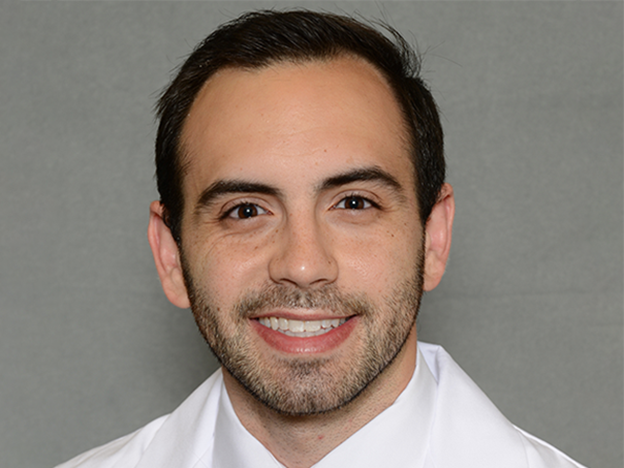 by Dr. Alex D'Amico, PGY-3
by Dr. Alex D'Amico, PGY-3
Preserving quality of life is something we are called to do as physicians. During my time in the ICU, I gained a deeper appreciation for this important aspect in medicine and have attempted to understand my patients’ goals when evaluating and treating their maladies. Reducing hospitalization is vital to this, and those with heart failure (HF) are at high risk of having frequent hospital admissions. As a resident physician interested in a career in cardiology, I have found that low income and poor access to healthy food options have been large barriers to me
providing optimal care to patients with HF. I have also observed that many of my patients readmitted to the hospital for HF exacerbation and those in clinics with increasing diuretic resistance are frequently related to unhealthy food options and living in food deserts, both of which are often out of the patient’s control. This became more and more apparent during my intern year in the CCU, where my attempts to advise and educate patients on dietary modifications would often be met with responses such as “Well those foods just cost too much.” For this reason, I find myself paying more attention to the costs and sodium content of different foods during my own shopping.
Moreover, with how advanced guideline directed medical therapy (GDMT) is becoming for HF, I find myself prescribing more and more new medications to those presenting with new or chronic heart failure. This has made financial barriers substantially more obvious given the cost of such new meds that have the best cardiovascular benefits. Given this, it is frequent that I have to choose medications that my patients can afford and have learned many tricks on how to stretch a dollar. Some examples include sending 90-day Rx supplies, educating the patient how to use good Rx or downloading the app, getting meds OTC rather than with a Rx, and teaching them about pill cutting. Additionally, as physicians we should apply our knowledge and interpret evidence-based medicine when selecting which medications are the “best” for them given many patients may not be able to afford all meds that are encouraged by guidelines. This method can also be used when a patient’s insurance may cover a limited number of medications, regardless of the number of comorbidities the patient has.
What I have learned from my interactions with such patients is that we should not let perfect be the enemy of good. While we may not be able to pay for healthier foods, we can spend time educating patients on which microwave dinners may be better for them and teaching them how to evaluate salt intake and read labels. Such changes may not get them down to their 2-gram per day sodium diet, but offers an opportunity for relative improvement (going from 6 grams to 4 grams as an example). This similarly applies to medications where we may have to choose a regimen that is tailored to them, even though it's not “perfect” (such as using an ACE inhibitor compared to the new Sacubitril-Valsartan; or selecting the cheaper metoprolol over empagliflozin). Relative salt reduction, educating and empowering patients, and utilizing cost-effective medications are strategies that I have used and believe the sum of these can make a difference in hospitalization, outcomes, and importantly their quality of life.
Lastly, we may not be able to eradicate the social determinants of health that prevent us as physicians to care for our patients the best, but trying and addressing such factors/barriers is important. Throughout residency, such patients have shown me that being a physician is not just about being "smart" and knowing all the science, but extends to the realm of compassion and empathy where we must put ourselves in the patients' shoes to understand their fears and barriers in order to help them live a healthier life. By doing so we can truly gain the trust of our patients and concurrently defend their well being outside of the hospital.